Mysterious Viking Gerdrup Grave – Burial Place Of Sorceress Katla And Her Son Odd Mentioned In The Eyrbyggja Saga?
Ellen Lloyd - AncientPages.com -The discovery of the Gerdrup grave surprised scientists because it challenged our knowledge of Viking burials. Who were the individuals buried in the double grave?
The Gerdrup grave has previously been interpreted as a ‘master and slave burial,’ but studies of the ancient skeletons indicate this theory is flawed. To understand why the Gerdrup grave is of great historical and archaeological importance, one must understand that the Vikings had both law and government without a written law.
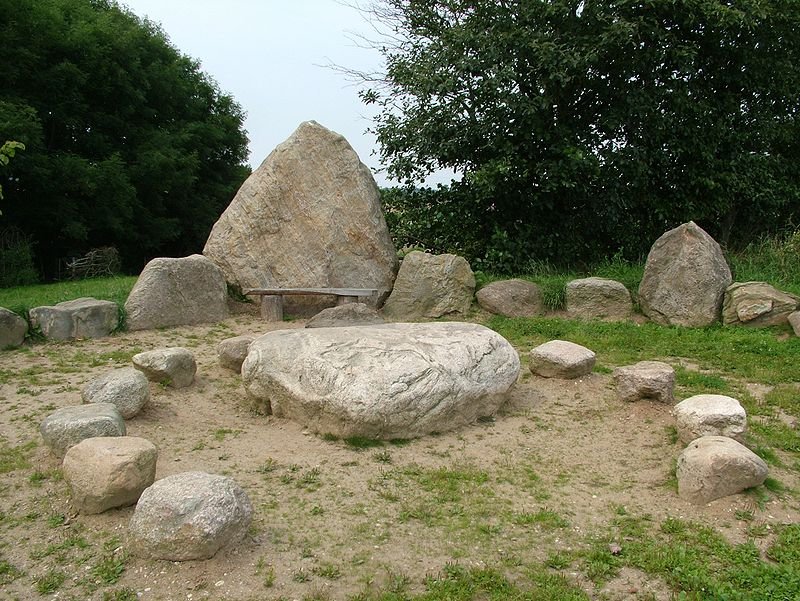
A typical thingstead where people met and made decisions. This one is in Schleswig-Holstein, Germany. Credit: Clemensfranz - CC BY-SA 3.0
Vikings are often portrayed as lawless individuals who did whatever they wished, whether it was wrong or not. It’s true there were troublemakers among Vikings. Erik the Red is a good example of a controversial Viking who was an outlaw. He was very violent, and his temper was beyond his control. This resulted in him being exiled from his country on two occasions! Even his countrymen got tired of him because he simply didn’t know where to draw the line.
We must remember that not all Vikings were like Erik the Red. What is not particularly well-known is that even though there was no written law and only rune writing existed then, the ancient Viking society had a sophisticated government and law system.
Viking law and order was based on the so-called thing system. A Thing was the governing assembly made up of the free people of the community. Each community had its own independent Thing where all free Vikings could gather to make law, resolve disputes, and make decisions. The meeting place was called a thingstead.
The Thing System was not restricted to men. Women and handicapped people were allowed to attend the meetings.
There were severe punishments for breaking the law in Norse society. This brings us to the longstanding mystery of the Viking Gerdrup Grave (Gerdrupgraven) near Roskilde in Denmark.
This grave was found in 1981, and scientists have been unable to determine why the individuals were buried here. Inside the Gerdrup Grave, there are two skeletons. One belongs to a man who was between 35 and 40 years old at the time of his death. He is lying on his back with crossed ankles. This suggests that he has been tied to his feet. The head is twisted unnaturally down towards the left shoulder, and the neck is probably broken.
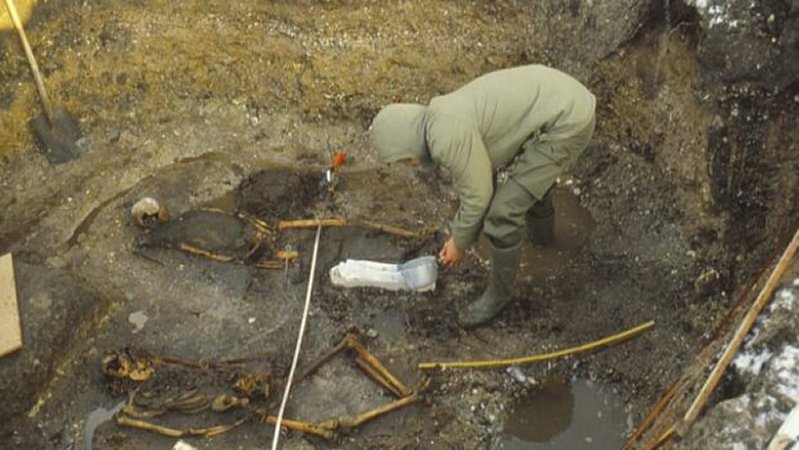
Who is buried in the Gerdrup Grave? Credit: Roskilde Museum
Next to him are the remains of a woman, also lying on her back. Who were the man and the woman? Why were they buried together? Were they slaves, warriors, or simply ordinary members of the Viking society?
"As soon as the grave was discovered, it aroused a great deal of interest. It was a grave that deviated from the classic perception of the graves of the Viking Age, especially due to the woman’s mixture of gender-specific grave goods: a needle box and spearhead.
This ‘anomaly’ was emphasised by the presence of the man who had apparently been killed in the grave, as well as by the large stones that had been placed on top of the woman’s body. Based on these indicators, the excavator of the grave, Tom Christensen, cautiously suggested that the grave might have been the resting place of a sorceress or valkyrja: a woman buried with a special status symbol – the spear – and a special grave item – the killed man – and it was clearly intended that the deceased woman should remain in the grave, so the stones were placed in it.
The supposedly isolated location of the grave is also mentioned, and reference is made to medieval written sources, which describe how sorceresses were stoned to death and/ or buried at the beach." 1
The Gerdrup Grave was the first discovery that proved that Viking women were buried along with a weapon – in this case, a lance. We have previously seen that Viking children were buried with extremely sharp knives. The purpose of placing these artifacts in the tombs is not entirely clear, but one possibility is that the knives should help the little ones in their afterlife. Perhaps Vikings buried their children with knives because they thought it was an indispensable tool that one must carry when entering Valhalla.
The Gerdrup Grave offers evidence Vikings placed weapons in graves no matter whether the deceased was a woman, man, or child.
Solving the Gerdrup Grave murder mystery has been difficult, but DNA studies have shed some light on this enigmatic 1,000-year-old Viking grave.
DNA testing has revealed that the pair are actually mother and son, and that the man was not, as previously believed, a sacrificial slave.” 2
According to Ole Kastholm, "it’s an incredibly exciting and surprising result we have here. We need to thoroughly consider what this means."3
The revelation means that the history of the Gerdrup Grave needs to be rewritten, and a new mystery needs to be solved.
Kastholm said, “we need to look at whether other graves and other source material from the Viking Age could reveal some patterns that might help us solve this case.” 3
Kastholm thinks it’s possible we can find clues, or maybe even the solution, in the Icelandic Sagas, a series of narratives written between the 12th and 15th centuries covering Viking history.
It’s obvious the man has been executed, hung, and bound before being laid in the grave. Meanwhile, the woman was weighed down by large stones.
Who was the woman buried in the Gerdrup grave? Credit: Adobe Stock - Warpedgalerie
One theory is that the lance belonging to the woman in the grave is actually a sorceress’s staff. Was the woman a Völva? In Norse mythology, the Völva was a very powerful female shaman and seer.
She held a significant place in ancient Viking society. Her powers were considered so strong that not only Vikings feared her prophecies, but even Odin, the greatest of all Norse gods, consulted her to learn what the future had in store for the gods. This powerful female shaman is often mentioned in Norse mythology.
A Völva has long been regarded as a purely mythological figure, but archaeological evidence clearly shows Norse, female shamans did exist.
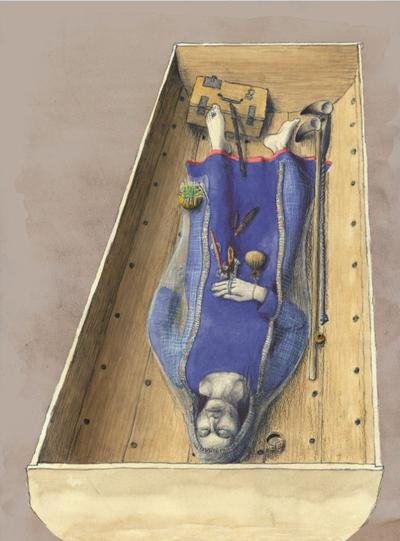
The buried Norse seeress from Fyrkat – reconstruction drawing by Thomas Hjejle Bredsdorff. Image credit: National Museum of Denmark
Some years ago, a very mysterious grave was discovered in Denmark. Scientists found a woman dressed in fine blue and red clothes inside the tomb adorned with gold thread. Her clothes showed she was very important and most likely held royal status.
Scientists discovered an intriguing metal wand and seeds from the poisonous henbane plant inside her tomb, which indicated that the female was indeed a Völva.
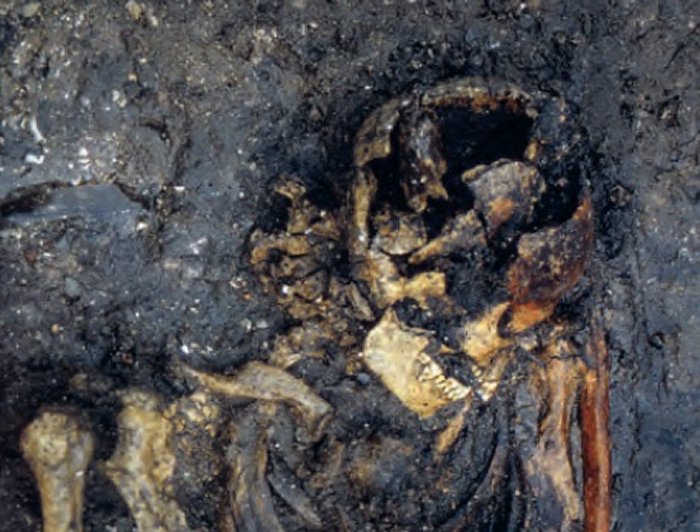
If the woman and her son were not slaves, could they have been individuals mentioned in Icelandic Sagas? Credit: Roskilde Museum
Returning to the Gerdrup Grave, we are forced to conclude that the buried Viking woman was not a person society appreciated. She had been stoned to death, but why?
The Eyrbyggja Saga relates the story of the sorceress Katla and her son Odd who were persecuted and executed. Odd was hung, and Katla was stoned to death.
Could the people buried in the Gerdrup Grave be Katla and her son? "A different idea, which departs from the sorceress and slave theme, is proposed by David Wilson. He suggests that the male had raped the female, and had been executed for this crime, and buried along with his victim." 1
It’s a very interesting archaeological discovery. Maybe more DNA studies can provide us with more valuable information in the near future. For now, the Gerdrup Grave skeletons can be viewed at Roskilde Museum.
Updated on April 22, 2024
Written by Ellen Lloyd – AncientPages.com
Copyright © AncientPages.com All rights reserved. This material may not be published, broadcast, rewritten or redistributed in whole or part without the express written permission of AncientPages.com
Expand for references- Ole Kastholm, Reconstructing the Gerdrup Grave –: the story of an unusual Viking Age double grave in context and in the light of new analysis,
Danish Journal of Archaology, Vol. 10, https://doi.org/10.7146/dja.v10i0.126750 - DNA testing sheds light on old Viking murder mystery - Copenhagen Post
- Anders Malling Beck og Frida Kruse Lind - Mysterium om 1000 år gamle skeletter i berømt vikinge-grav løst, TV2.dk
More From Ancient Pages
-
 Ancient Secrets Of Karelia: Mysterious Vottovaara Mountain Was Sacred To The Sami People
Featured Stories | Apr 5, 2017
Ancient Secrets Of Karelia: Mysterious Vottovaara Mountain Was Sacred To The Sami People
Featured Stories | Apr 5, 2017 -
 New Evidence Of Roman And Medieval Leicester
Archaeology | Dec 10, 2015
New Evidence Of Roman And Medieval Leicester
Archaeology | Dec 10, 2015 -
 Ancient Egyptian Tombs With Stunning Trove Of Artifacts And Human Remains Unearthed In Saqqara
Archaeology | Jan 17, 2024
Ancient Egyptian Tombs With Stunning Trove Of Artifacts And Human Remains Unearthed In Saqqara
Archaeology | Jan 17, 2024 -
 Climate Change Behind Early Human Migration To The Americas At Key Intervals – Scientists Say
Archaeology | Feb 17, 2023
Climate Change Behind Early Human Migration To The Americas At Key Intervals – Scientists Say
Archaeology | Feb 17, 2023 -
 Viking Grave And Sword Discovered In Norwegian Garden
Archaeology | Jul 3, 2023
Viking Grave And Sword Discovered In Norwegian Garden
Archaeology | Jul 3, 2023 -
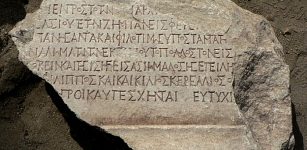 2nd Century Inscription Unearthed At Forum Of Ancient City Of Philippopolis, Bulgaria
Archaeology | Oct 21, 2019
2nd Century Inscription Unearthed At Forum Of Ancient City Of Philippopolis, Bulgaria
Archaeology | Oct 21, 2019 -
 On This Day In History: Battle Of Dettingen – English Armies Were Victorious Over The French – On June 27, 1743
News | Jun 27, 2016
On This Day In History: Battle Of Dettingen – English Armies Were Victorious Over The French – On June 27, 1743
News | Jun 27, 2016 -
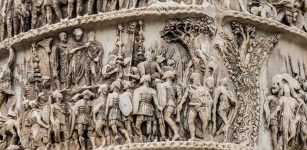 Impressive Column Of Emperor Marcus Aurelius – War Monument From Ancient Rome
Featured Stories | Jul 6, 2017
Impressive Column Of Emperor Marcus Aurelius – War Monument From Ancient Rome
Featured Stories | Jul 6, 2017 -
 Starkad The Viking – Legendary Norse Hero Who Was Both Blessed And Cursed By Gods
Featured Stories | Jul 29, 2019
Starkad The Viking – Legendary Norse Hero Who Was Both Blessed And Cursed By Gods
Featured Stories | Jul 29, 2019 -
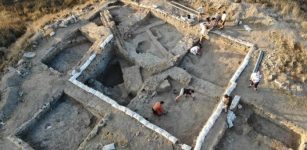 Huge Defensive Wall Excavated At Tel Erani, Israel Is More Than 5,300 Years Old
Archaeology | Sep 12, 2019
Huge Defensive Wall Excavated At Tel Erani, Israel Is More Than 5,300 Years Old
Archaeology | Sep 12, 2019 -
 Giulia Tofana Poisoned 600 Men – Beautiful Sicilian Woman And Her Deadly Mission
Featured Stories | Feb 22, 2018
Giulia Tofana Poisoned 600 Men – Beautiful Sicilian Woman And Her Deadly Mission
Featured Stories | Feb 22, 2018 -
 Potlatch: Ancient North American Indian Tradition Of Very Generous Gift Giving
Ancient Traditions And Customs | Sep 12, 2016
Potlatch: Ancient North American Indian Tradition Of Very Generous Gift Giving
Ancient Traditions And Customs | Sep 12, 2016 -
 How Did A Major Cooling Event 8,200 Years Ago Affect Hunter-Gatherers?
Archaeology | Jan 28, 2022
How Did A Major Cooling Event 8,200 Years Ago Affect Hunter-Gatherers?
Archaeology | Jan 28, 2022 -
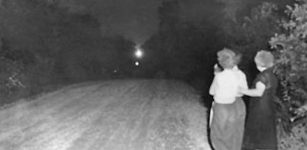 Mysterious Hornet Spook Light In Missouri
Featured Stories | Jun 26, 2024
Mysterious Hornet Spook Light In Missouri
Featured Stories | Jun 26, 2024 -
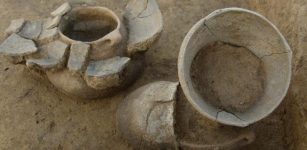 New DNA Study Links Early Europeans’ Cultural And Genetic Development Over Several Thousand Years
Archaeology | Aug 9, 2023
New DNA Study Links Early Europeans’ Cultural And Genetic Development Over Several Thousand Years
Archaeology | Aug 9, 2023 -
 On This Day In History: King Louis XVI Was Executed By Guillotine In Paris – On Jan 21, 1793
News | Jan 21, 2017
On This Day In History: King Louis XVI Was Executed By Guillotine In Paris – On Jan 21, 1793
News | Jan 21, 2017 -
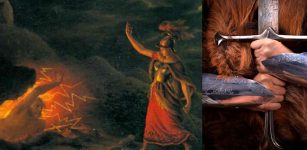 Shieldmaiden Hervör’s Dangerous Quest For The Cursed Tyrfing Sword
Featured Stories | Apr 20, 2023
Shieldmaiden Hervör’s Dangerous Quest For The Cursed Tyrfing Sword
Featured Stories | Apr 20, 2023 -
 A Baffling 100-Year-Old ‘Alien’ Puzzle – Shocking Cosmic Secrets
Featured Stories | Sep 20, 2018
A Baffling 100-Year-Old ‘Alien’ Puzzle – Shocking Cosmic Secrets
Featured Stories | Sep 20, 2018 -
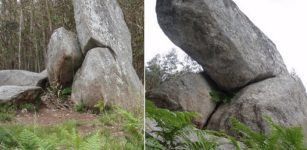 Pena Molexa (Lunar Boat): Megalithic Corner Dedicated To A Magician Woman Who Knows The Secrets Of Earth And Underworld
Featured Stories | Jul 23, 2023
Pena Molexa (Lunar Boat): Megalithic Corner Dedicated To A Magician Woman Who Knows The Secrets Of Earth And Underworld
Featured Stories | Jul 23, 2023 -
 Movie Stars’ Creepy Encounters With The Unexplained
Featured Stories | Oct 28, 2019
Movie Stars’ Creepy Encounters With The Unexplained
Featured Stories | Oct 28, 2019

